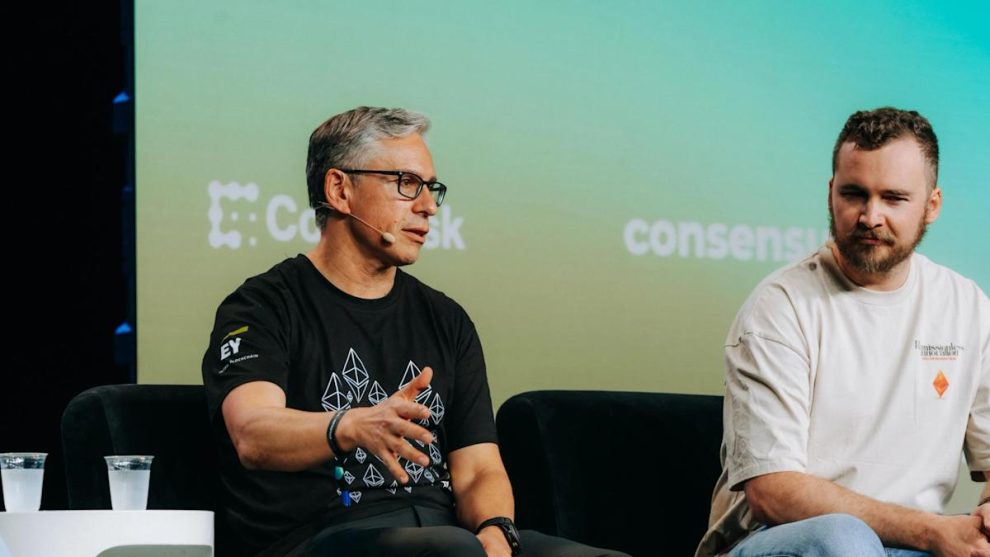TORONTO — Ethereum just completed its most significant upgrade in more than a year, but the milestone comes after a turbulent stretch for the blockchain. The price of ether (ETH) has declined, developers have migrated to rival platforms, and the Ethereum Foundation — a nonprofit steward of the project — has faced criticism for a lack of coordination and vision.
Speaking on a panel at CoinDesk’s Consensus conference in Toronto, Paul Brody — global blockchain leader at EY and chairman of the Enterprise Ethereum Alliance — and Josh Stark of the Ethereum Foundation, offered a more optimistic view of the road ahead.
There are two things the community is looking for, Stark said. First, “the ecosystem needs stronger leadership … Stronger leadership on the roadmap, on executing that roadmap, and really help coordinating the ecosystem to tackle the big challenges.”
Second, the network needs better messaging. “Ethereum’s fundamentals are incredibly strong, but few people are standing up to tell the story of that ecosystem and to boost the incredible stuff being built,” Stark said.
For all its recent struggles, Stark and Brody maintained that Ethereum remains the most innovative and forward-focused project in crypto.
Brody suggested that concerns about the foundation’s leadership are particularly overblown, giving the Ethereum Foundation’s former executive director, Aya Miyaguchi, top marks for her tenure, which began in 2018 and ended this year.
“Ethereum is a proof-of-stake chain with more than 120 layer-2 networks,” said Broday. Network capacity, he added, is near “300 and 450 million transactions a day.” Additionally, “transaction fees at the L2 level — they average under one penny per transaction for the last three months,” said Brody. “If I step back and look at [Miyaguchi’s] tenure very objectively in terms of the results, I would say A plus.”
Miyaguchi transitioned to Ethereum Foundation president in March 2025, installing Hsiao-Wei Wang and Tomasz Stańczak as its new co-executive directors — part of a leadership restructuring aimed at enhancing the foundation’s strategic focus.
Some critics have argued Ethereum’s roadmap has relied too heavily on layer-2 rollups — independent blockchains that process transactions cheaply and quickly before “settling” their history on Ethereum’s main chain. Brody defended the network’s rollup-centric roadmap: “I’m delighted,” he said.
While layer-2s like Optimism, Arbitrum and Coinbase’s Base network have lowered users’ fees — generally considered the main headwind to wider network adoption — skeptics say they also introduce new security risks and fragmentation hurdles that threaten Ethereum’s fundamental value proposition.








Add Comment